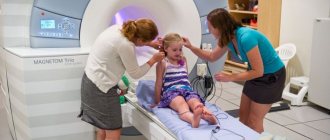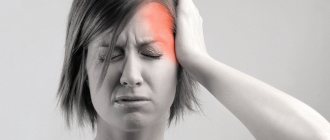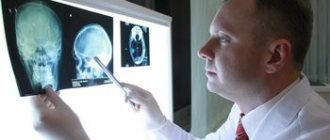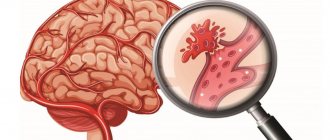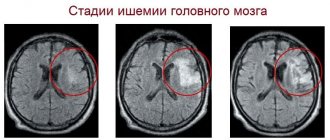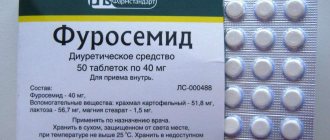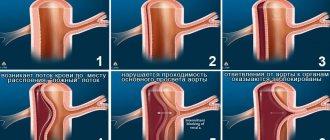What causes vascular spasms?
Cerebral vasospasm (another name for cerebral vascular spasm) can occur for various reasons. This is caused by problems not only in the brain, but also in the cervical region, where the arteries supply blood to the brain cells.
Prolonged severe fatigue, lack of sleep, oxygen starvation, poor blood supply significantly affect the condition of blood vessels, as do some vascular diseases.
The most common causes of cerebral vascular spasms:
- chronic stress and fatigue;
- lack of sleep and oxygen;
- nicotine;
- degeneration of vascular walls due to age-related changes.
Diseases that provoke spasm of cerebral vessels:
- cervical osteochondrosis;
- hypertension;
- VSD;
- renal disorders;
- tumors.
Such serious factors are not the only culprits in the occurrence of spasm symptoms. A sharp constriction of blood vessels can occur, for example, when cooling the head without a hat, taking a large dose of alcohol, or a sudden surge of emotions (including positive ones). If earlier the disease was considered age-related, when the vessels lost elasticity and changed due to natural patterns, today the pathology has become significantly “younger”, becoming a frequent companion of residents of megacities, where the ecology, rhythm of life, and air pollution leave much to be desired.
At-risk groups
Spasm of cerebral vessels threatens certain categories of people whose body is least protected from the problem. Most often these are individuals with certain diseases or a sensitive vascular system:
- suffered a heart attack, stroke;
- diabetics;
- hypertensive patients;
- those suffering from angina pectoris;
- prone to thrombosis;
- mentally unstable;
- persons who react acutely to changes in atmospheric pressure.
Vascular headache
It is important to understand that the term “vascular headache” is not an official designation for any disease. However, patients often hear from their doctors about “vascular” pain.
In our country, “vascular pain” refers to vegetative dystonia, migraine, headache due to high blood pressure and impaired venous outflow. At the same time, “vegetative dystonia” in itself is also not a correct diagnosis, but in practice this diagnosis is made and various neurological problems are blamed on it.
The bad thing is that, using such a general term, the doctor himself often does not delve into the details. As a result, an inaccurate diagnosis leads to the choice of incorrect treatment.
Primary and secondary pain
Although the diagnosis “vascular headaches” is not entirely correct, no one disputes that blood vessels are often involved in the development of headaches. However, a violation of vascular tone or damage is NEVER the only cause of a headache, but only one of the stages in the development of a painful episode! The appearance of pain is always the result of a complex cascade of reactions from all body systems (cardiovascular, endocrine, nervous and others).
Symptoms of Prinzmetal's angina
The list of characteristic symptoms of vasomotor angina includes:
- pain in the chest at rest, which can be of a different nature - from some discomfort to severe pain radiating to the head or arm;
- feeling of pressure and tightness in the chest;
- attack of nausea;
- sweating;
- dizziness, clouding of consciousness;
- tachycardia, etc.
The duration of the attack ranges from 2 to 20 minutes, and the characteristics of individual episodes are usually similar to each other. Cases of relapse with frequent attacks may be followed by a state of calm for several weeks or months.
Are you experiencing symptoms of Prinzmetal's angina?
Only a doctor can accurately diagnose the disease. Don't delay your consultation - call
Causes of headaches
“Cerebral vasospasm” Some patients mistake a squeezing, pressing headache for “cerebral vasospasm.” However, this is exactly how the most common type of primary headache manifests itself – tension headache. What is the reason for the effect of the antispasmodic No-shpa in this case? If you carefully read the instructions for use of this drug, you can be convinced that it is tension headache, and not vascular headache, that is an indication for its use. In addition to the fact that No-Spa relaxes the smooth muscles of the gastrointestinal tract, biliary tract and genitourinary system, it quite effectively relieves muscle tension. As for the short-term relief of headaches while taking vascular drugs - the placebo effect, i.e. self-hypnosis has not been canceled.
“Bad vessels” The concept of “bad vessels” does not exist in medicine. What the average person means by “bad blood vessels” - hypertensive angiopathy, vascular atherosclerosis (loss of elasticity, thickening of walls, formation of atherosclerotic plaques), etc., are risk factors for the development of cerebrovascular accidents, i.e. stroke. But it has nothing to do with headaches.
Autonomic-vascular dystonia The autonomic nervous system is responsible for the functioning of the heart, vascular tone, thermoregulation, sweating, urination, the functioning of the gastrointestinal tract and much more. An imbalance in the functioning of the autonomic nervous system leads to fluctuations in blood pressure, “interruptions” in the functioning of the heart, sweating, diarrhea, and even autonomic crises (panic attacks). However, autonomic dystonia cannot be the cause of headaches. Even such a phenomenon as lability of vascular tone (constriction or expansion), which is extremely important for adaptation to environmental conditions, can cause dizziness, but not headache.
Intracranial hypertension Since Soviet times, “increased intracranial pressure” has been considered perhaps the main cause of headaches. Already from early childhood, the child was given such a diagnosis and a “sentence” was passed that in the future he would definitely have a headache. The head did hurt, but for a completely different reason, but the ICH label remained. An increase in intracranial pressure is indeed accompanied by a characteristic headache (see secondary (symptomatic) headaches). But is intracranial hypertension so common in practice? Fortunately, it’s extremely rare!
Signs of cerebral vasospasm
The main symptom of the pathological process is headache of varying localization and intensity. It usually occurs in the temples and forehead, sometimes felt all over the head.
You may also experience:
- dizziness;
- pain in the eyes, ear, neck;
- noise in ears;
- “flies” before the eyes;
- darkening of the eyes;
- nausea;
- changes in blood pressure;
- feeling tired;
- numbness of lips;
- tingling in temples.
If a spasm is a precursor to a stroke or rupture of an aneurysm, disturbances in speech, sense of orientation in space and coordination of movements, and loss of consciousness are possible.
Popular questions about cerebral vasospasm
How to understand the cause of a headache?
First of all, it’s worth analyzing the situation - what could be causing the problem? Perhaps a headache occurs when the weather changes, after excessive physical exertion, hypothermia, stress, or frequent lack of sleep. If there is no explainable reason, you should definitely seek help from a doctor.
What drugs can be taken without a doctor's prescription?
Most non-narcotic analgesics and antispasmodics are sold without a prescription.
The most effective drugs?
The best tablets for cerebral vasospasm are combined drugs that have analgesic and antispasmodic effects, for example, Bralangin, Pentalgin and Spazmalgon. Antispasmodics that reduce vascular tone, for example, Papaverine and Drotaverine, are also effective.
Treatment of Prinzmetal's angina
A course of medication that affects both the symptoms of the disease and its causes can help cope with attacks and reduce their regularity. Clinical recommendations for Prinzmetal angina include:
- taking drugs from the category of calcium antagonists in combination with long-term nitrates;
- anti-alpha adrenergic drugs that prevent coronary artery spasm;
- a course of antioxidant vitamins C and E;
- other medications that promote the natural elasticity of blood vessels and maintain their conductive capacity.
If a conservative course turns out to be ineffective, doctors resort to surgical intervention. More often this is coronary angioplasty with stenting, less often cardiac denervation with plexectomy simultaneously with coronary bypass surgery. A decision may be made to implant an automatic defibrillator or pacemaker.
Causes of Prinzmetal's angina
Coronary artery spasm can occur in the following cases:
- hypothermia of the body;
- smoking;
- symptoms of arterial hypertension;
- stress;
- increased cholesterol levels;
- taking medications that slow blood flow;
- consumption of alcohol and drugs.
The disease is more common in patients aged 50 to 60 years. 5 times more common in men than in women. Smoking and alcohol consumption are recognized as the main risk factors. Less commonly, the pathology develops against the background of vasomotor vascular disorders.
Causes of cerebral vasospasm
Angiospasm often occurs due to:
- overwork;
- nervous or physical stress;
- sedentary lifestyle (for example, prolonged sitting at the computer);
- stress and strong emotions, even positive ones;
- lack of sleep;
- lack of oxygen in the room;
- abuse of coffee and strong tea;
- vitamin deficiency;
- smoking;
- excessive alcohol consumption;
- hypothermia;
- atmospheric pressure fluctuations;
- age-related changes in the arteries.
Spasm of cerebral vessels can be a symptom of osteochondrosis of the cervical spine, arterial hypertension, cerebral aneurysm, tumor formation, vegetative-vascular dystonia, and thyroid diseases.
The risk group includes elderly people and people sensitive to weather changes, smokers, abuse alcohol, often drink strong tea/coffee, suffer from insomnia, hypertension, angina pectoris, diabetes mellitus or dyscirculatory encephalopathy, and have a family history of stroke or myocardial infarction .
Treatment
If the problem is caused by external negative factors, they should be avoided if possible. If a spasm occurs against the background of any disease, therapy should be aimed at curing it.
At the same time, drugs are used to relieve spasms of cerebral vessels - No-Shpa, Halidor, Dibazol, Doverin, Papazol, Spazmol. They affect the muscular wall of blood vessels, reduce muscle tone, and expand the lumen of blood vessels.
You can also take painkillers for cerebral vasospasm - Analgin, Aspirin.
Antispasmodic analgesics are drugs of a combined composition that eliminate spasms and relieve pain. This group includes Pentalgin, Andipal, Baralgetas, Novigan, Spazgan, Spazmoblok.
To improve cerebral circulation, it is recommended to take nootropic drugs such as Actitropil, Gopantam, Idebenone, Nootropil, Recognan, Piracetam.
For the treatment of cerebrovascular disorders, medicines and dietary supplements based on ginkgo biloba leaf extract are widely used. This plant improves the rheological properties of blood and oxygen supply to the brain, normalizes microcirculation and metabolism in cells, reduces the permeability of vascular cells, and has antithrombotic and antihypoxic effects.
The patient is recommended physiotherapeutic procedures: oxygen therapy, kinesiotherapy, hydrotherapy, magnetic therapy, darsonvalization. Massages in the neck and back of the head help improve blood circulation.
